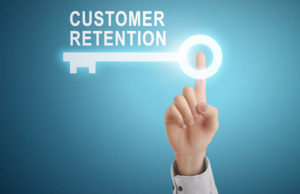
This story was originally published on Oct. 28, 2010, and is brought to you today as part of our Best of ECT News series.
When it comes to the broad topic of “CRM failure,” you often hear the same tales: a too-complicated integration, an incompetent integrator or inflexible technology.
The reality is that technology is usually not the problem, nor is it integration or integrators. If you push, you’ll find that the most common CRM killer is adoption failure. That is, after the system’s in place and the technology is working, the intended users can’t be persuaded to use it.
Like so much about CRM, it’s a mistake to focus on the technology when it comes to adoption. Sure, the interface needs to be clean and usable — and allowing end-users to modify the interface to reflect the way they work doesn’t hurt, either. However, adoption isn’t really about technology. It’s about selling CRM to your workers — and especially your sales force.
Others along the chain seem much more eager to accept CRM. Marketing loves the ability to harness large volumes of data as it hunts for qualified leads, and service loves the ability to draw a complete picture of a customer’s relationship with the company. Sales is still a sticking point.
What it comes down to is this: If you’re a sales manager, how good are you at selling CRM to your sales team? Like any successful sale, it’s not about a slick pitch or a flashy demo; it’s about identifying the customers’ problems and showing them how your product will solve them.
Two Problems
Problem one that sales pros face today is an increase in expectations. There are fewer sales assets in many businesses, but the sales reps who are left have even greater revenue expectations placed upon them. Meanwhile, low performers are routinely given the axe.
In order meet quotas and thus hang on to their jobs, sales people have two options: Work harder, or work smarter. Using CRM is the way to work smarter, since it helps to organize data that might otherwise be difficult to access when it’s needed the most.
Problem two is that managers don’t behave like allies to sales reps. That’s been a problem when it comes to CRM — the technology’s seen as something for the manager, not the sales person.
Managers shouldn’t use CRM data as a trigger for heavy-handed discipline or threats; that’s punishing the sales rep for using the CRM system, and it will backfire spectacularly.
However, if managers use it the right way — especially in terms of constantly monitoring the sales pipeline — they can go from being reactionary taskmasters who constantly upbraid sales reps for not achieving goals to becoming mentors who can help steer them along the way. That will make them better sales reps and help them reach their targets.
The Sales/Marketing Schism
Another problem is the antipathy between sales and marketing. Disagreement over the definition of a “qualified lead” causes sales reps to cast a jaundiced eye toward marketing and to spend much of their time prospecting instead of selling.
CRM allows sales and marketing to look back at successful sales and understand in retrospect what defined a truly qualified lead — and to continue doing this over time as the customer changes. This allows marketing to deliver better leads that have higher conversion rates, which allows sales reps to close more sales in the same amount of time (see problem 1).
Finally, CRM helps with follow-on sales to customers that have already been won. CRM allows the business to continue to build its relationship with the customer, so if marketing is on top of things, and is getting data back from sales through the CRM system, then it can act upon it to help improve loyalty. Over time, the customer’s far more likely to say yes to future sales.
Now, making this case to your sales staff will also require you to overcome some common complaints. Chief among them is that sales reps hate entering data into the CRM system. Some organizations take a heavy-handed approach to enforcing this, limiting commission on sales that are not tracked in CRM. Others are more subtle. It’s smart to use the examples of sales reps who have boosted their commissions through the use of CRM as object lessons for others.
Selling CRM to your reps is, at its core, very similar to selling your products and services — what’s important is staying focused on your customers’ needs and desires.
CRM Buyer columnist Chris Bucholtz blogs about CRM at Forecasting Clouds. He has been a technology journalist for 15 years and has immersed himself in the world of CRM since 2006. When he’s not wearing his business and technology geek hat, he’s wearing his airplane geek hat; he’s written two books on World War II aviation, and his next two are slated for publication in 2010.





















































